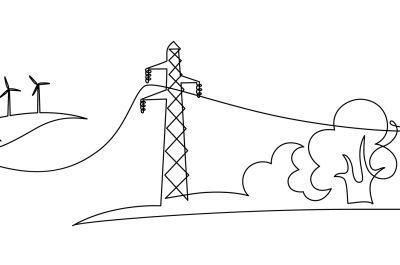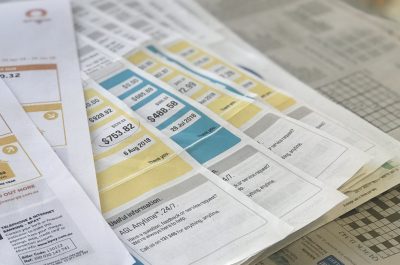Berlin Energy Dispatch #3: Comparing grid innovation has Australia top of class
On the way into Germany, you fly over seemingly endless wind farms. After touching down, you ride into town playing spot-the-EV, and once you are there it seems that every street has public EV charging infrastructure. With this introduction, you might think that Germany and the rest of the EU are well ahead of Australia in the energy transition and integrating new technologies. In terms of scale and ambition, this is probably true (although we are catching up on ambition). However, when it comes to innovation to get the most out of network infrastructure, Australia is up near the top of the class.
This is the third in a series of articles borne out of a delegation tour of Germany to exchange ideas and experiences between Australian and German energy nerds.
First and second impressions
While the scale of change in Germany is impressive – the volume of renewable energy already integrated in the system and the number of EVs on the roads – some of the comments made by German delegates and presenters didn’t seem to agree with this first impression of Germany as being well ahead of Australia in the transition. Comments like “in the future we might be able to turn the theory of ‘virtual power plants’ into reality” or “technically, batteries have all sorts of uses”.
What was going on here? In Australia, virtual power plants (VPPs) have been in operation, in real world trials, for some years now. There are nine VPPs in South Australia alone. Distributed or customer energy resources (DER/CER) can also provide services to the grid. Electricity networks in Australia are:
- progressing tariffs toward cost reflectivity, incentivising a more efficient use of energy services over time, including for DER
- developing dynamic operating envelopes to allow more energy from DER to benefit customers over time
- developing and facilitating community batteries to share the benefits of batteries across customers
- implementing new non-network alternatives to traditional poles and wires solutions for transmission investment, such as a compressed air storage system to support reliability in Broken Hill
- testing out the capabilities of batteries to provide system security services so that transmission networks can procure or provide these services in innovative ways to reduce the cost to customers, and
- implementing innovative service solutions such as testing and now rolling out stand-alone power systems, avoiding the need for tens of thousands of kms of additional power lines.
Australia’s natural drivers of innovation
Clearly, the approach to the integration of DER differs significantly in the two countries. Looking under the surface, the drivers of DER uptake and the need for efficient DER integration are very different in each context. The different drivers point to innovation being more of a necessity in Australia. Two key drivers of innovation for us are geography and cost.
In the second article in this series we saw that the physical networks in Germany and Australia are very different. Germany’s is a strong and meshed power system, while Australia’s is a longer, less meshed and ultimately weaker system. If you add the same volume of unmanaged DER on the two systems, the first one to break would be Australia’s. With most of Germany’s 80 million residents living in apartments, both Germany and Australia have about nine-10 million detached homes. Yet Australia has more than 3.5 million residential solar PV systems to Germany’s 3 million.
It is therefore not surprising that Germany and most other countries have not yet started to experience many of the critical system issues caused by DER uptake that Australia is already grappling with. This includes issues such as voltage control, system strength and stability and minimum net system load. A significant focus of innovation in Australia for some time has been on how to integrate DER in a way that helps rather than hurts the physical power system.
As also discussed in the earlier article, Australians expect their grid to cost about the same as it does in other countries. Achieving this in the context of rapidly rising proportions of DER necessitates innovation. It is not an option to simply build out the physical capacity of the grid to handle ever increasing proportions of rooftop solar PV and other DER.
This all points to the need for new ways of thinking and operating the grid. New approaches must be developed, tested and rolled out to minimise the impacts of DER on the grid and maximise the potential benefits.
Regulation and policy for DER and new technologies
While geography and cost constraints necessitate innovation around DER grid integration in Australia, the lack of these drivers, together with a stronger environmental movement, has also impacted the approaches to DER and new technologies in Germany.
German policy and regulation do not seem to reward the effective integration of DER with the grid. For example, incentive mechanisms to support investment in home batteries do not allow import of energy from the grid to fill the batteries due to a restriction on charging with energy that is not ‘green’. Even providing support services to the grid, such as the control of frequency, could require a battery to take some energy from the grid at times, but this is not allowed.
Further to this, it appears that German distribution networks have been slow to implement time-of-use tariff structures that could support the economics of batteries. In the end, the only real use case for batteries installed behind customers’ meters in Germany is to soak up energy from rooftop solar PV to use later in the day.
The policy and regulatory restrictions for batteries in Germany also extend to the larger scale. Grid-scale batteries in Germany can only be registered to provide one service. By contrast, in Australia batteries can provide multiple services, also called ‘value stacking’. This is partly why the German energy system has some 550 MW of grid scale battery storage set to enter the market, while Australia already has about this much grid-scale storage connected and has well over 20 GW proposed to connect in the future. While much of this will not end up being financed and commissioned, the incentive to connect batteries into the Australian grid appears an order of magnitude greater than in Germany.
Regulatory innovation and change in Australia have played a crucial role in this, with grid scale batteries able to stack value and provide a range of services. New services are being implemented that recognise the capabilities of these new technologies, such as the creation of new fast frequency response markets. The market operator and transmission networks are also working towards better understanding the capabilities and services that grid forming inverters can provide on the power system, so that these services can be valued where they provide services to the grid.
Innovation is the key ingredient that will underpin any successful transition to net zero emissions in a way that keeps the power system reliable and affordable. Perhaps as an accident of geography, Australia is well on the way to rethinking the design and operation of the power system. While we are nowhere near close to the destination, we have begun building a culture of innovation that will serve us well on the journey.


